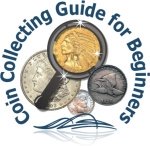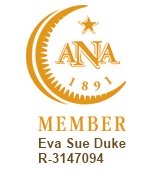 |
 |
|
|
| ||
What is Coin Grading?Coin grading is the process of determining the condition of a coin by coin collectors and dealers. The grade of a coin plays a huge factor in determining the value of a coin. The higher the grade of the coin, the higher its value. Other factors also come into play when determining the value of a coin. They include: age, demandDemand
The more people who want a particular coin, the higher its value will probably be. For example, some coins may be fairly plentiful and bring a higher price than a scarcer coin just because more people want that coin in their collection., rarityRarity This simply has to do with the number of coins that have survived. The fewer numbers of any coin, the more valuable it becomes. and supplySupply Simply put, if more coins are made in a year than there are people who want them, their prices will remain low. However, if there is a greater demand than supply, their prices rise.. Every coin collector should at least learn the basics of grading coins. It is essential knowledge for both buying and selling coins. If you at least know the basics of coin grading, you will be able to determine if a coin you are considering purchasing is priced according to its worth. You will also have a good idea how much a coin you own is worth in case you decide to sell it. When grading coins, you should consider three main points:
For most coins that have been in circulationCirculated (passed around in public) Consider how badly the coin is worn and what damagedings, scrapes, dents etc. the coin has sustained. Coins Are Graded on a ScaleFirst let's set the stage. When the United States Mint first started making "small cents" in the late 1850s, people became nostalgic for the earlier "large cents" and began to hoard them. As time went on many began to try to get one of each of the large cents that were minted. Hence, our nation's first coin collectors. Next comes our first coin dealers who helped these collectors find the coins that were missing from their set. These dealers and collectors began describing the condition of the coins. The dealer might say, "I have a "pretty good" coin for you." or "I have found you a coin, but it is "rather poor". As time went on, certain terms became standard. The first four terms used were:
Next came the discussion of, "This coin is better than fine but it is not uncirculated", so, the term "very fine" was added to the vocabulary. These intermediate terms continued to be added as needed. In 1949, Dr. William Sheldon developed what has become known as the Sheldon Scale of coin grading. This method of grading coins added a numerical 70-point scale to the descriptive terms already in use. Coin collectors at the time knew about of Dr. Sheldon's scale, but it did not become the norm until the mid 1980s when third-party coin grading services came onto the scene. These coin grading services merged the numeric 70-point scale of Dr. Sheldon with the descriptive terms of earlier times to develop the system for grading coins we use today.
|
If You Can't Find What You Are Looking For....Search This Site!
Custom Search

Coin Collecting Guide for Beginners |
|
|
||
|
Search This Site
Copyright©
2008-2014 coin-collecting-guide-for-beginners.com
Template Design
|
||
